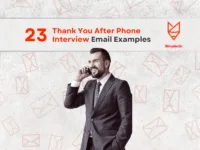Cold outreach emails can be a game changer in expanding your professional network and generating leads. An effective cold outreach email template should be concise, personalized, and clearly convey the value you offer to the recipient. Crafting such emails can significantly increase your response rates and help establish meaningful connections.
Understanding what to include in your template is essential. A strong subject line, a brief introduction, and a compelling call to action are crucial components that can capture attention and prompt a reply. Tailoring your message to address the recipient’s specific needs or pain points will enhance your chances of success.
With the right approach, cold outreach emails can open doors to new opportunities and collaborations. You have the potential to transform your outreach efforts by using a well-structured email template that resonates with your audience.
Understanding Cold Outreach
Cold outreach involves contacting potential clients or leads who have had no prior interaction with you. It serves specific purposes and presents unique challenges that are key to navigating this communication strategy effectively.
Definition and Purpose
Cold outreach refers to unsolicited communications, typically via email, targeting individuals or businesses. The main goal is to introduce your product or service, generate interest, and ultimately establish a conversation that could lead to a business relationship.
This approach is often utilized in sales and marketing contexts. Cold outreach allows you to reach a broader audience and can be a valuable tool for lead generation. Success in this area often hinges on crafting a compelling message that resonates with the recipient’s needs and interests.
Common Challenges and Misconceptions
Several challenges accompany cold outreach. A key issue is low response rates, as many recipients may ignore unsolicited emails. Misunderstandings about the effectiveness of cold outreach often stem from unrealistic expectations about immediate results.
Another misconception is that cold outreach is purely a numbers game. While volume can help, personalization is crucial. Tailoring your message to address specific pain points increases chances of engagement.
Understanding these challenges and misconceptions will enhance your approach. Emphasizing clarity, relevance, and value in your outreach can lead to improved outcomes.
Preparation for Cold Outreach
Effective cold outreach requires strategic planning and careful execution. Preparing meticulously enhances your chances of making a meaningful connection with potential leads. Focus on research, crafting a compelling message, and adhering to regulations.
Research and Targeting
Before reaching out, you must identify the right audience. Start by defining your ideal customer profile. Consider factors like industry, company size, and specific roles within organizations.
Leverage tools like LinkedIn, industry publications, and company websites to gather insights. Look for pain points that your product or service can address.
Create a list of prospects based on your findings. Prioritize them according to their potential interest and alignment with your offering. Tailor your messaging to resonate with each target’s unique needs.
Crafting a Value Proposition
A strong value proposition is crucial for grabbing attention. Clearly articulate what makes your offering unique. Focus on the benefits that are most relevant to the prospect.
Use concise language and avoid jargon. State how your product or service solves a problem or improves a situation.
Incorporate social proof where possible. Briefly mention success stories or notable clients to build credibility. Aim for a tone that reflects both confidence and genuine desire to help.
Compliance with Email Regulations
Ensure your outreach complies with email regulations such as GDPR and CAN-SPAM. Familiarize yourself with the rules in your target regions to avoid penalties.
Include clear opt-out options in your emails. Allow recipients to unsubscribe easily if they choose not to engage.
Maintain transparency by identifying yourself and your company clearly. State the purpose of your email upfront, fostering trust right from the start.
By taking these compliance steps, you not only protect your business but also enhance your reputation among potential clients.
Creating the Cold Outreach Email
Crafting an effective cold outreach email involves a strategic approach. Focus on key elements such as subject lines, openings, email structure, and compelling calls to action.
Subject Line Strategies
The subject line is your first opportunity to capture attention. Aim for clarity and relevance to encourage opens. Personalization works well; include the recipient’s name or company to create a connection.
Examples of subject lines:
- “Quick Question About [Recipient’s Business]”
- “Ideas to Increase Your [Specific Metric]”
Keep it concise, ideally under 50 characters. Avoid spammy words like “free” or excessive punctuation. Testing different subject lines can help identify what resonates best with your audience.
Email Opening and Hook
Your opening lines should engage the recipient immediately. Consider starting with a compliment about their work or referencing a mutual connection to establish rapport.
A strong hook can address a specific pain point or highlight a relevant benefit. For example:
“I noticed your company has been expanding; I have some ideas that could enhance your growth strategy.”
Be brief and articulate why you’re reaching out, directly linking your value proposition to their situation.
Structuring the Email Body
Structure your email for readability and impact. Use short paragraphs and bullet points to break up text.
Begin with a concise introduction of who you are and your purpose. Then, outline the key benefits your proposal offers. Clearly state how it can help solve a problem or improve their situation.
Example structure:
- Introduction: Brief intro about yourself or company.
- Value Proposition: Highlight specific benefits.
- Supporting Points: Use bullet points for clarity.
Encourage engagement by making it easy to read and scan quickly.
Effective Call-to-Actions
A clear call-to-action (CTA) guides your reader on the next steps. Be specific and direct about what you want them to do.
You might invite them to schedule a call, respond to your email, or visit your website. Use actionable language:
- “Let’s schedule a 15-minute call to discuss further.”
- “Reply if you’re interested in learning more.”
Ensure the CTA stands out by placing it at the end of the email. Highlight it through formatting, such as bold text or a different color.
Personalization Techniques
Personalization can significantly increase the effectiveness of your cold outreach emails. By utilizing specific strategies, you can create a more compelling message that resonates with your audience.
Leveraging Prospect Information
Gather and utilize data about your prospects to customize your emails. This can include their name, company, recent achievements, or specific interests.
For instance, if you notice a prospect recently won an award, mention it in your email to show genuine interest. A personalized opener that references their work can set a positive tone.
Consider using tools like LinkedIn or company websites to collect relevant information. Personal facts help create a connection and increase engagement with your email.
Tailoring Messages to Industry
Understanding your prospect’s industry is crucial for personalization. Each sector has unique challenges and trends, so your message must reflect this knowledge.
Research the specific pain points related to their industry. For example, if targeting the technology sector, mention recent developments in AI or cybersecurity that may affect their business.
You can create tailored email templates for different industries. This ensures your messaging addresses the specific needs and interests of each sector, making your outreach more relevant.
Segmentation for Greater Relevance
Segment your email list based on distinct criteria such as job title, location, or company size. This approach enables you to create targeted messages that speak to each group’s unique characteristics.
For instance, a senior executive may require a different value proposition compared to a marketing manager. By customizing your emails, you increase the likelihood of getting a response.
Using email marketing tools can streamline this process. You can easily categorize contacts and send personalized content that resonates with different segments, enhancing your outreach effectiveness.
Templates and Examples
Effective cold outreach requires precise templates and relevant examples. By utilizing structured formats, you can enhance your chances of engaging the recipient and fostering a connection.
Initial Cold Outreach Email Templates
An initial outreach email should be concise yet engaging. It should briefly introduce yourself while outlining the value you can provide.
Example 1:
Subject: Quick Question About [Their Business]
Hi [Name],
I’m [Your Name], and I help businesses like [Their Business Name] optimize their [specific area]. I noticed on [platform/website] that you [specific observation]. I’d love to chat about how we can enhance your results together. Are you available for a quick call next week?
Example 2:
Subject: Let’s Improve Your [Service/Product]
Hi [Name],
As a [Your Position] at [Your Company], I specialize in enhancing businesses’ [specific service or product]. I came across your work on [specific platform] and was impressed. I think we could collaborate to boost your [specific metric]. Interested in a brief chat?
Example 3:
Subject: Let’s Connect!
Hi [Name],
I’m [Your Name], and I work with companies in [Industry]. I saw your recent post about [topic] and wanted to reach out. I believe my experience in [specific skill/industry] can help tackle your current challenges. How about a quick call to explore this?
Follow-up Cold Outreach Email Templates
Follow-up emails are vital after your initial outreach. They show persistence and remind the recipient of your value.
Example 1:
Subject: Following Up on My Previous Email
Hi [Name],
I wanted to follow up my last email regarding [specific topic]. I truly believe that collaborating could help [specific benefit]. If you have a few minutes this week, I’d love to discuss how we can work together.
Example 2:
Subject: Just Checking In
Hi [Name],
I hope you’re doing well. I’m following up on my previous email about [specific service]. I would be happy to answer any questions you might have or provide more information. Are you free for a quick chat?
Example 3:
Subject: Did You See My Last Email?
Hi [Name],
I wanted to reach out again about my proposal concerning [specific topic]. I understand you’re busy, but I believe this opportunity could be beneficial for you. Let me know if you have time to connect this week.
Industry-Specific Examples
Tailoring your outreach to specific industries maximizes relevance and connection.
Example 1 (Tech):
Subject: Streamlining Your Development Process
Hi [Name],
As a software developer, I see potential in refining your current development workflow. At [Your Company], we specialize in optimizing processes for tech firms, enabling faster deployment. I’d love to discuss how we can support your goals.
Example 2 (Marketing):
Subject: Enhancing Your Ad Strategies
Hi [Name],
I notice your efforts in digital marketing at [Their Company]. My firm, [Your Company], provides insights that could enhance your current strategies. Let’s schedule a call to explore how we can drive your campaigns to new heights.
Example 3 (Healthcare):
Subject: Improving Patient Engagement
Hi [Name],
I’m impressed by the work [Their Company] does in healthcare. I specialize in tools that increase patient engagement and reduce no-shows. A brief discussion could uncover ways we can work together to enhance outcomes. Would you be open to chatting?
Testing and Optimization
Testing and optimization are critical for enhancing the effectiveness of your cold outreach emails. By utilizing methods like A/B testing and carefully analyzing open and response rates, you can make data-driven adjustments to improve engagement.
Cold Outreach Email Templates
A/B Testing for Cold Emails
A/B testing allows you to compare two versions of an email to determine which performs better. This involves sending one version to a small segment of your audience and another version to a different segment.
Key elements to test include subject lines, email bodies, and calls to action. For instance, you might change the subject line from “Boost Your Sales” to “Transform Your Business Today.” Track metrics such as open rates and click-through rates to gauge performance.
Make sure to test only one variable at a time to isolate the impact of changes. After collecting results, implement the winning version for wider distribution. This iterative process can significantly enhance your email campaigns.
Analyzing Open and Response Rates
Understanding your open and response rates is crucial for assessing the success of your cold outreach. Open rates indicate how many recipients opened your email, while response rates show how many took the desired action.
A typical open rate for cold emails ranges from 15% to 28%. If your rate is lower, consider experimenting with different subject lines or sending times. For response rates, aim for around 1% to 5%. If your responses are lower, review your messaging and call to action for clarity and relevance.
Using tools like Google Analytics or email marketing platforms can help track these metrics effectively. Visual representations, such as pie charts or tables, can make this data easier to interpret. Adjust your strategies based on these insights to continuously optimize your outreach efforts.
Cold Outreach Email Templates
Best Practices for Cold Outreach Email
When crafting cold outreach emails, understanding timing, engagement, and professionalism is crucial for successful communication. Following specific practices can enhance your chances of receiving responses and fostering connections.
Timing and Frequency
Sending your emails at the right time can significantly influence open and response rates. Aim to send emails during weekdays, particularly between Tuesday and Thursday, as these days tend to have higher engagement levels.
Consider these timing tips:
- Mornings (8 AM – 10 AM): Many people check their emails at the start of the day.
- Afternoons (1 PM – 3 PM): Post-lunch hours can be effective as individuals often catch up on emails.
- Frequency: Limit your outreach to 1-3 emails per week to avoid overwhelming recipients.
FAQ:
- What days are best for sending cold emails?
Tuesday to Thursday are generally the most effective days. - What time should I send my emails?
Early mornings or early afternoons tend to yield better results. - How often should I follow up?
1-3 times a week is ideal for follow-ups without being intrusive. - Is it better to send emails in the morning or afternoon?
Both timings can work, but mornings may capture attention first thing.
Engagement and Follow-Up
Engagement comes from understanding your recipient’s needs. Personalize your emails to demonstrate relevance and value. Use short, clear sentences to maintain interest.
Key strategies include:
- Personalization: Use the recipient’s name and reference their work or interests.
- Concise Content: Keep emails brief to respect their time.
- Call-to-Action: End with a clear next step, such as scheduling a call or requesting feedback.
Follow-Up Timing: If there’s no response, send a follow-up after about a week. Keep it friendly and reference your previous email.
FAQ:
- How can I personalize my outreach emails?
Mention the recipient’s name and include relevant details about their work. - What should I include in my follow-up?
A friendly reminder of your original email and a request for a response. - How long should my initial email be?
Aim for 100-200 words to keep it concise and engaging. - When is the best time for a follow-up?
Wait about a week after your initial email before sending a follow-up.
Maintaining Professionalism in Cold Outreach Email
Professionalism builds trust and credibility in your outreach efforts. Always ensure that your emails are clear, respectful, and free of errors.
Best practices for professionalism:
- Use a Professional Email Address: Avoid personal or casual accounts.
- Proofread Your Emails: Errors can undermine your message. Take the time to review your content.
- Respect Boundaries: If a recipient asks not to be contacted, honor their request promptly.
Tone and Language: Maintain a confident yet polite tone. Avoid slang or overly casual language.
FAQ:
- What type of email address should I use?
Use a professional address, preferably linked to your domain. - How can I ensure my email is free of errors?
Proofread carefully or use grammar-checking tools before sending. - What should I do if someone requests not to be contacted?
Remove them from your mailing list immediately. - Is it important to use a formal tone in outreach emails?
Yes, a professional tone builds trust and shows respect for the recipient.
Useful Tools and Resources
Utilizing effective tools and resources can streamline your cold outreach efforts. Different categories of tools help with various aspects, including campaign management, lead generation, and performance analysis.
Email Campaign Software
Email campaign software allows you to create, send, and manage your outreach emails effectively. Popular options include Mailchimp, Sendinblue, and HubSpot.
- Mailchimp: Offers user-friendly templates and robust automation features. It provides insights on open and click-through rates to assess your campaigns.
- Sendinblue: Known for SMS marketing capabilities alongside email campaigns. Its automation tools help in personalizing outreach at scale.
- HubSpot: Integrates well with CRM systems, enabling personalized follow-up emails based on user interactions. It includes tracking features that help you refine your strategies.
Prospect and Lead Generation Tools
Finding the right leads is essential for successful outreach. Prospecting tools can help you identify and segment potential clients.
- LinkedIn Sales Navigator: Enables advanced searches to find prospects based on industry, company size, and job titles. You can save leads and receive alerts for job changes.
- Hunter.io: Assists in finding email addresses associated with specific domains. This tool is especially useful for ensuring your outreach is directed to the right person.
- Clearbit: Provides comprehensive company and contact data. It allows you to enrich existing lists with valuable insights to better tailor your outreach.
Analytic and Tracking Solutions
Measuring the effectiveness of your cold outreach is crucial. Analytical tools offer metrics that show how well your emails perform.
- Google Analytics: Tracks traffic generated from your email links, providing insights on user behavior. It is essential for understanding the impact of your emails on website visits.
- Mailchimp Analytics: Offers detailed reports on your campaign’s performance. Key metrics include open rates, click rates, and conversion rates.
- Mixpanel: Focuses on user engagement after email interactions. You can set up funnels to see specific actions taken by leads after receiving your outreach.




